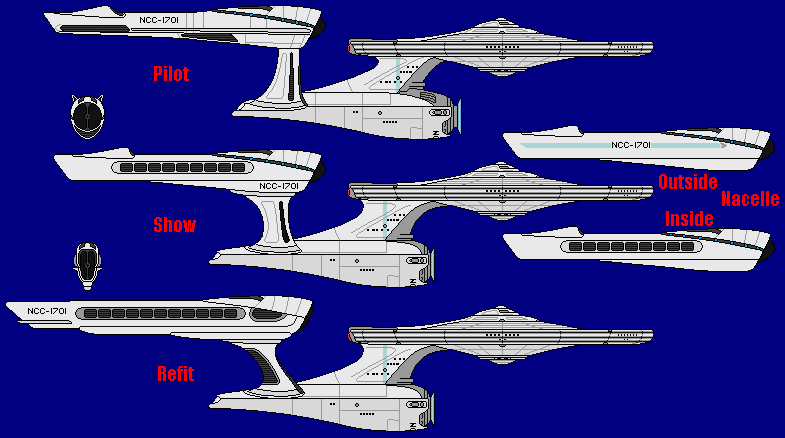CuttingEdge100 said:
BTW: It's kind of ironic that the 33-incher that you show only has one set of windows mounted high up on the rim...
One needs to recall that the windows were just painted on the outside of the 33 inch model, where as the windows had to be cut into the surface of the 11 foot model (and around the internal structure of the model).
I'm thinking it wasn't all that bad an idea to use the underhang/undercut of the outer-rim to carry payload and equipment... you might be able to even fit some escape pods in there...
There is nearly as much space there as there is for the deck above in that compartment... plenty of room for some cabins (which were designed with lower hanging ceiling elements).
The secondary hull was always the primary location of payload, equipment, manufacturing and machine shops.
But more importantly, the idea of escape pods or life boats has always been a ill suited maritime metaphor added in later Trek but was nonexistent in TOS. Space ships don't sink. There is nothing to sink into, so there is no good reason to leave a ship. So escape pods/life boats are effectively coffins. Jefferies wisely divided the ship into compartments, each able to maintain a habitable environment for an extended period. If something happens so fast that those compartments aren't activated to protect the crew, then there wouldn't have been time for any other possibility either.
The worst case scenario would be the crew needing to get away from the main engines... this is why the primary hull can separate from the rest of the ship.
But the point is, in space you never leave the ship. The life of your ship is the life of you.
BTW: What is the point of having the 10 foot high decks? The decks only go up to about 8 or 8 1/2 feet and then you have those bulkheads. What do those do?
Are you asking me (a person of the 21st century) that?
We don't know. Maybe that height is needed to keep the artificial gravity from the deck above from causing equilibrium problems for the crew of the deck below.
The reality of the show was that the bulkheads across the corridors kept you from seeing that there was no ceiling so that the existing studio lighting rigs could be used. As for
in universe purpose... they were often associated with tubes that crossed the corridors. For all that we saw, there might have been a lot of stuff exposed on the ceilings of the corridor too. And maybe they were there as a reminder not to let anything go above that point or it would fall the the ceiling above (kinda like how kids lose balloons).
Personally, I like puzzles... the harder the puzzle the better. Getting the TOS Enterprise to work as envisioned back during TOS is a great challenge. Sure, there are changes that can be made to make it easier... but that defeats the point for me.
Similarly, there are tons of things that later Trek has attempted to nail down tech wise that I think were a major mistake. Not knowing (and not attempting to limit these things) is one of the most important aspects of keeping Trek timeless. If you remove all of Trek after TOS, and look at TOS by itself, new possibilities open up as the years go by. TOS attempted not to define the technology in use too much and that means that we can apply new ideas to what we saw decade after decade after decade.
I've said this before, but I think it bares repeating... the technology aspects of TOS should be considered as a
black box. You don't need to know how it works, only that it works in a logical and predictable way. We live our lives this way right now. Most people have no idea how computers work. They don't know about the solid state physics behind computer chips, or the techniques used for etching smaller and smaller patterns within those chips. Programmers today have no idea about the actual machine code of the computers anymore because they have been given human usable programming languages.
In Star Trek we can make guesses, but we really shouldn't attempt to
know what we really can't know. And it was the hubris of those making Trek in the 80's and beyond that they
knew what the 23rd and 24th centuries would be like technically that have made those versions of Trek dated sooner than TOS in my eyes. Keeping that mystery going is great and is quite inspirational.
So even though my project is a
fan project I hope that by leaving most of this stuff open for later interpretation that people who make Trek will get the point of not filling in too many of those things that really should be left blank.




